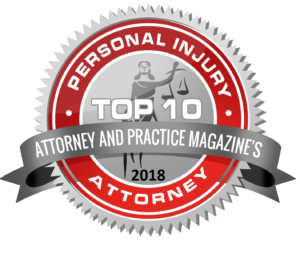In Virginia, understanding the Statute of Limitations for filing a pedestrian accident lawsuit is crucial for anyone involved in such incidents. The Statute of Limitations sets the deadline by which a lawsuit must be filed, and failure to meet this deadline can result in losing the right to seek compensation. The law is designed to ensure that legal claims are made within a reasonable time while evidence is still fresh and witnesses’ memories are intact.

When a pedestrian is injured in an accident, the consequences can be severe, often leading to significant medical bills, lost wages, and pain and suffering. In such situations, the injured party may have the right to seek compensation through a personal injury lawsuit. However, this right is not indefinite, and it is governed by the Statute of Limitations. In Virginia, the Statute of Limitations for filing a personal injury lawsuit, including pedestrian accidents, is generally two years from the date of the accident. This means that the injured party must file a lawsuit within two years of the accident, or they may lose their right to seek compensation.
The Importance of the Statute of Limitations
The Statute of Limitations serves several important purposes in the legal system. First, it ensures that lawsuits are filed while evidence is still fresh. Over time, physical evidence can deteriorate, and witnesses’ memories can fade, making it more difficult to prove a case. By setting a deadline for filing a lawsuit, the law encourages parties to take legal action promptly, ensuring that the court has access to the best possible evidence.
Second, the Statute of Limitations provides a sense of finality for both parties. Once the deadline has passed, the defendant can be confident that they will not be sued for the incident, allowing them to move on with their lives. This is particularly important in personal injury cases, where the defendant may be facing significant financial liability.
Finally, the Statute of Limitations helps to prevent the court system from becoming clogged with old cases. By requiring lawsuits to be filed within a certain time frame, the law ensures that the courts are dealing with current, relevant cases, rather than spending time on matters that have long since lost their relevance.
Exceptions to the Statute of Limitations
While the general rule in Virginia is that a pedestrian accident lawsuit must be filed within two years of the accident, there are some exceptions to this rule. One common exception is known as the “discovery rule.” Under this rule, the Statute of Limitations may be extended if the injury was not immediately apparent after the accident. For example, if a pedestrian suffers an injury that does not manifest until several months after the accident, the two-year clock may not start running until the injury is discovered.
Another exception applies to cases involving minors. If the injured pedestrian is under the age of 18 at the time of the accident, the Statute of Limitations may be extended until the child turns 18. This means that a minor may have until their 20th birthday to file a lawsuit, regardless of when the accident occurred. However, this exception is not absolute, and there may be other factors that affect the deadline in such cases.
In cases where the defendant is a government entity, there may be additional requirements and shorter deadlines. For example, if a pedestrian is injured due to the negligence of a government employee or agency, they may be required to file a notice of claim with the government entity within a certain period, often six months, before filing a lawsuit. Failure to comply with these requirements can result in the loss of the right to sue.
Tolling of the Statute of Limitations
In certain circumstances, the Statute of Limitations may be “tolled,” or temporarily suspended, allowing the injured party more time to file a lawsuit. Tolling can occur for several reasons, including when the defendant is out of state or cannot be located. In such cases, the clock may stop running until the defendant returns to the state or is found.
Tolling may also occur if the injured party is mentally incapacitated at the time of the accident. In such cases, the Statute of Limitations may be tolled until the individual regains mental capacity. However, tolling is not automatic, and the injured party must present evidence to the court to justify the delay in filing the lawsuit.
It is important to note that tolling is an exception rather than the rule, and the courts generally favor enforcing the Statute of Limitations. Therefore, it is crucial for injured parties to act promptly and seek legal advice as soon as possible after an accident.
The Consequences of Missing the Deadline
Failing to file a pedestrian accident lawsuit within the Statute of Limitations can have serious consequences. If the deadline is missed, the defendant can file a motion to dismiss the case, and the court is likely to grant it. This means that the injured party will lose their right to seek compensation through the court system, regardless of the merits of their case.
In some cases, the injured party may still be able to negotiate a settlement with the defendant or their insurance company, even if the Statute of Limitations has expired. However, without the threat of a lawsuit, the injured party is at a significant disadvantage in negotiations, and the chances of receiving fair compensation are greatly reduced.
It is also important to consider that insurance companies are well aware of the Statute of Limitations and may use it to their advantage. If the deadline is approaching, the insurance company may delay settlement negotiations in the hope that the injured party will miss the deadline, leaving them without legal recourse. Therefore, it is crucial to be aware of the Statute of Limitations and to take legal action well before the deadline to avoid these potential pitfalls.
Choosing a Personal Injury Attorney Personal Injury Case TimelineRelated Videos
The Role of Legal Representation in Navigating the Statute of Limitations
Navigating the legal complexities of a pedestrian accident lawsuit can be challenging, particularly when it comes to understanding and adhering to the Statute of Limitations. Legal representation can play a critical role in ensuring that the injured party’s rights are protected and that their case is filed in a timely manner.
An attorney can help to determine the applicable Statute of Limitations for a specific case, taking into account any potential exceptions or tolling issues. They can also advise the injured party on the best course of action, including whether to pursue a settlement or proceed with a lawsuit. In addition, an attorney can handle the legal paperwork and court filings, ensuring that all deadlines are met and that the case is presented in the best possible light.
Legal representation is particularly important in cases involving government entities or other complex legal issues. An attorney with experience in pedestrian accident cases can help to navigate the additional requirements and shorter deadlines that may apply in these situations. They can also advocate on behalf of the injured party, ensuring that their rights are protected and that they receive fair compensation for their injuries.
Taking Action After a Pedestrian Accident
After a pedestrian accident, it is important to take action as soon as possible to protect your rights and ensure that you receive the compensation you deserve. This includes seeking medical attention, gathering evidence, and contacting a legal professional. The sooner you take action, the better your chances of success.
Seeking medical attention should be your first priority after an accident. Even if you do not feel injured, it is important to get checked out by a doctor, as some injuries may not be immediately apparent. Medical records will also be important evidence in your case, so it is crucial to document your injuries and treatment.
Gathering evidence is also important in building a strong case. This may include taking photos of the accident scene, obtaining contact information for witnesses, and preserving any physical evidence, such as damaged clothing or personal items. Your attorney can help you to gather and preserve evidence, ensuring that your case is as strong as possible.
Finally, it is important to contact a legal professional as soon as possible after the accident. The Statute of Limitations can be unforgiving, and the longer you wait to take action, the more difficult it may be to build a successful case. A legal professional can provide you with the guidance and support you need to navigate the legal process and ensure that your rights are protected.
Understanding the Process of Filing a Pedestrian Accident Lawsuit
The process of filing a pedestrian accident lawsuit can be complex and time-consuming. It involves several steps, including filing the initial complaint, conducting discovery, and going to trial if necessary. Each step of the process is governed by strict rules and deadlines, and it is important to have a legal professional on your side to ensure that everything is done correctly.
The first step in filing a lawsuit is to file a complaint with the court. The complaint is a legal document that outlines the facts of the case and the legal basis for the lawsuit. It must be filed within the Statute of Limitations, and it must be served on the defendant, who then has an opportunity to respond.
Once the complaint has been filed, the parties will enter the discovery phase of the lawsuit. During discovery, both sides will gather evidence and take depositions from witnesses. This is a critical phase of the lawsuit, as it allows both sides to build their case and assess the strength of the other side’s arguments.
If the case does not settle during discovery, it will proceed to trial. At trial, both sides will present their evidence and arguments to a judge or jury, who will then decide the outcome of the case. The trial process can be lengthy and expensive, and it is important to have a legal professional on your side to guide you through the process and advocate on your behalf.
Navigating the Statute of Limitations in Virginia for filing a pedestrian accident lawsuit requires a thorough understanding of the legal framework and timely action. Missing the deadline can have serious consequences, including the loss of your right to seek compensation for your injuries. It is essential to act promptly, seek medical attention, gather evidence, and consult with a legal professional to ensure your rights are protected.
If you or a loved one has been injured in a pedestrian accident in Virginia, do not wait to seek legal help. Contact NovaLegalGroup, P.C. today to schedule a consultation and learn more about your options for pursuing compensation. Our dedicated team is here to guide you through the legal process and fight for the justice you deserve.










